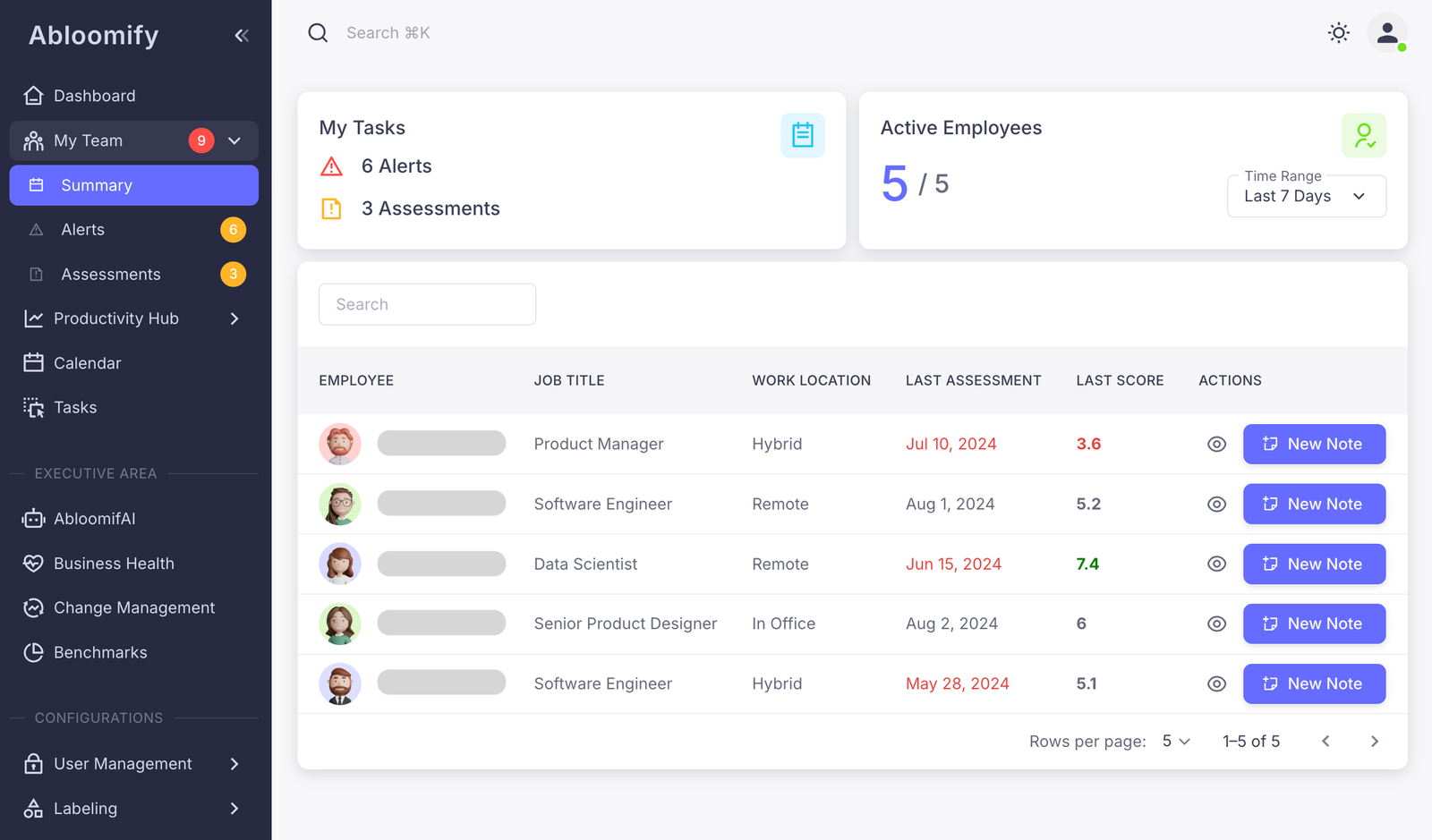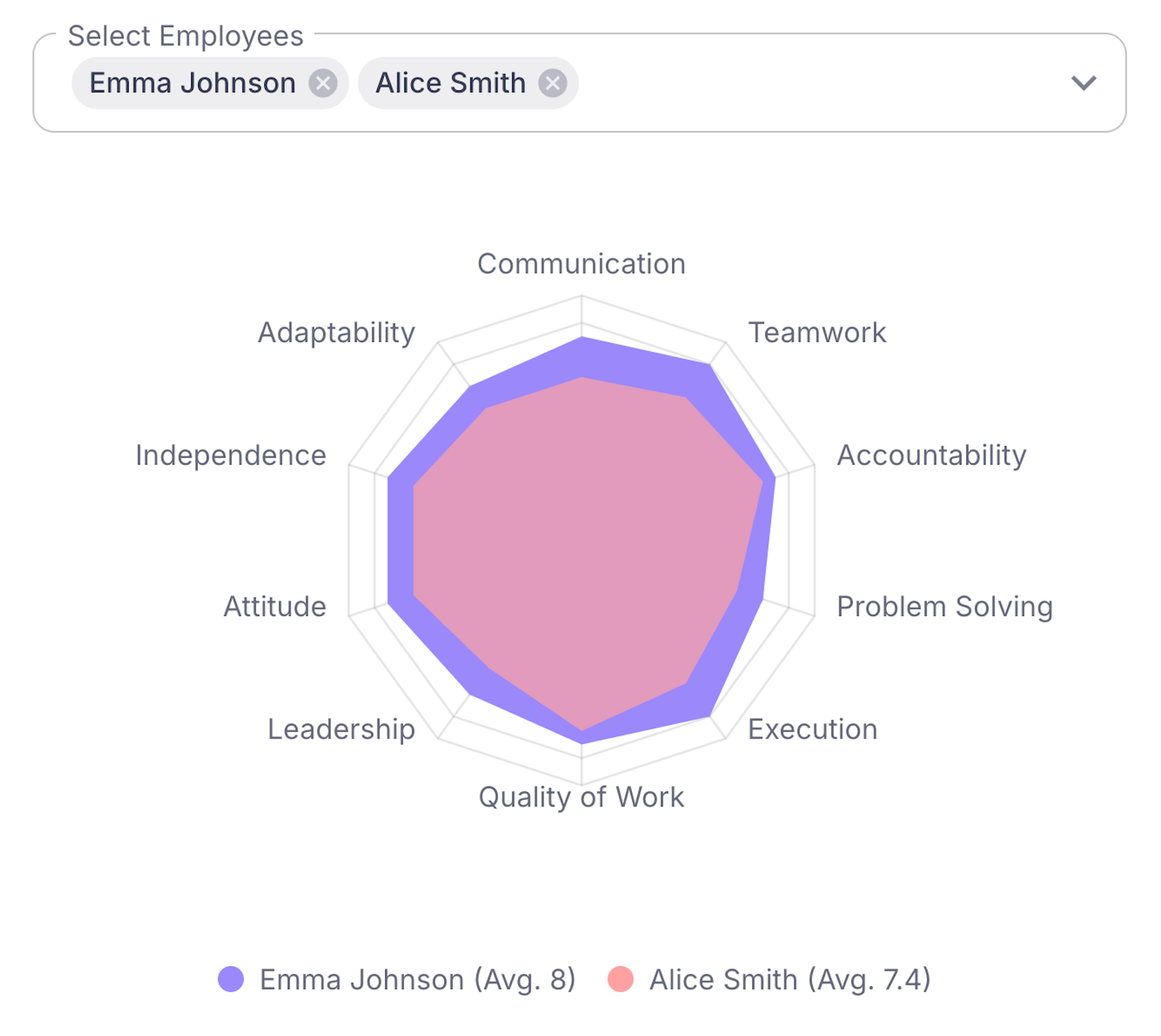Navigating HR decision-making in tech requires a firm understanding of best practices that foster both team growth and individual performance. This article outlines effective strategies tailored for technology companies, emphasizing the importance of data-driven insights to create agile and successful teams.
Understanding the Tech HR Ecosystem
Understanding the tech HR ecosystem requires recognizing unique challenges that demand tailored solutions. Speed and innovation often collide in tech environments, creating a talent landscape that necessitates agile HR strategies. Here are some key areas HR leaders should focus on:
- Recruitment Strategies: Rapid tech advancements mean skills become obsolete quickly. HR must prioritize finding candidates with not only current expertise but also potential for future adaptability. Employing innovative recruitment platforms can optimize the selection process, ensuring a match between candidate potential and company needs.
- Employee Engagement: Tech employees thrive in environments that foster creativity and ongoing learning. HR should cultivate a culture that promotes intellectual curiosity and collaboration. Utilizing engagement enhancement techniques can maintain motivation and align personal goals with company objectives.
- Retention Practices: In a competitive tech market, retaining top talent is crucial. Tech companies should offer clear career pathways and competitive benefits packages. Additionally, creating a supportive work environment centered around respect and innovation can increase retention rates significantly.
For HR in tech, traditional methods rarely suffice. Adaptability and foresight are key, as is leveraging technology to track employment trends and optimize human capital. HR leaders must embrace a forward-thinking approach, continuously refining strategies to support the dynamic demands of a tech workforce. By prioritizing adaptability, engagement, and tailored recruitment, HR can build resilient teams that drive innovation forward.
The Role of Data in HR
Data isn’t just an accessory in HR; it’s the backbone of effective decision-making. In tech, where innovation and agility rule, leveraging data isn’t optional. It’s your competitive edge. The right analytics tools can serve as a litmus test for your organizational health.
By integrating data analytics, you can gain insights into vital areas like performance, employee engagement, and productivity. Let’s break down what data can do for you:
- Performance Tracking: Real-time analytics provide a clear picture of team and individual performance, helping identify high-performers and areas needing improvement.
- Employee Engagement: Use data to dissect engagement levels. By understanding what drives and disengages your team, you can tailor strategies to boost morale and retention.
- Productivity Insights: Data reveals workflow bottlenecks, enabling the optimization of processes to enhance productivity.
When employees face burnout, productivity nosedives. Data can signal early warning signs by analyzing work patterns and engagement metrics. By catching these signals early, you can intervene before issues escalate.
While these benefits are clear, implementing data-driven strategies can seem daunting. Platforms that focus on workforce analytics simplify the process, allowing you to gather actionable insights with ease. For a deeper dive into how analytics platforms can transform your workforce, explore unlocking the power of workforce analytics.
Avoid making decisions based on gut feelings or outdated paradigms. Use data to back your choices, reducing risks and enhancing your capacity to create more engaged and productive teams. With robust data analytics integration, you position your HR function not just as a support role, but as a pivotal driver of strategic success.
Creating Lean and Resilient Teams
Building lean and resilient teams in tech requires foresight, adaptability, and smart resource allocation. Emphasizing team agility without losing focus on performance is decisive for long-term success. Here are some key considerations:
- Agility in Team Structure: Rigid organizational frameworks can stifle innovation. By adopting a fluid structure, teams can rapidly respond to market changes while maintaining momentum on projects. Encouraging cross-functional roles can enhance knowledge sharing and flexibility.
- Workload Balancing: Efficiently managing workloads prevents burnout and improves morale. Periodically reassess tasks to ensure an equitable distribution. Promote transparency in workload expectations and allow autonomy to prioritize tasks during busy periods.
- AI Tools for Efficiency: Leverage AI solutions for efficient workforce management. These technologies can predict staffing needs, balance workloads, and highlight skill gaps. Automating repetitive tasks frees up human capital to focus on creative and strategic work.
- Continuous Team Retrospectives: Implement regular feedback loops. Teams should frequently evaluate both successes and setbacks, adjusting strategies as needed to remain agile. This keeps alignment with broader business goals streamlined.
The strategic use of AI aligns with the future of work, offering insights into optimal workforce structuring. Balanced and adaptable teams can withstand market pressures and sustain competitive advantage. Explore more on utilizing AI to optimize workforce performance to drive transformation in workforce productivity. Preparing for change by implementing agile practices can catalyze progress and reinforce resilience in the fast-evolving tech landscape.
Data-Driven Performance Management
Data-driven performance management holds transformative potential. Businesses need to leverage continuous assessments and robust feedback mechanisms to build resilient teams. Real-time data offers a holistic view of employee performance. This goes beyond annual reviews, fostering ongoing development.
Continuous assessments enable agility in identifying skills gaps. Quickly adapting to changes is crucial in the tech sector. Real-time analytics illuminate problem areas and growth opportunities, empowering leaders to act swiftly.
Feedback mechanisms should be timely and precise. Continuous, constructive feedback makes employees feel valued and engaged. This approach reduces anxiety and improves performance.
AI-powered tools revolutionize career planning. These tools analyze employee skills and suggest personalized development paths. Here’s how to enhance performance management further:
- Implement AI tools for real-time assessments. These tools evaluate individual strengths and weaknesses, suggesting relevant skill development paths.
- Use predictive analytics for talent forecasting. Identify future leaders and prepare them for upcoming roles.
- Customize learning paths based on AI insights. Personalized learning fosters employee satisfaction and retention.
Predictive analytics not only sees talent trends but also aligns them with business goals. Use this data to form structured, realistic career pathways. Constantly updating employee development plans ensures relevance.
Incorporating AI into performance management reflects a commitment to innovation. This aligns with performance management practices involved in software companies, supporting an agile and efficient development culture.
Data-driven methods optimize tech workforce potential. The result? Enhanced performance and engagement. Teams thrive, ready to tackle the industry’s ever-evolving challenges.
Change Management in Tech
The tech industry thrives on change, yet managing change effectively remains a challenging task. Introducing new technologies or processes requires strategic planning and a focus on minimizing resistance while maximizing impact. Success lies in a robust change management framework that aligns with business objectives and employee capabilities.
First, recognize that communication is the cornerstone. Clear, transparent messaging can mitigate fears and uncertainties. Explaining the reasons for change, potential impacts, and individual roles ensures a shared understanding across the organization.
Next, use data to drive decisions. Assess employee readiness with tools that gauge sentiment and adoption rates. This data helps in tailoring strategies that address specific areas of resistance and identify champions who can advocate for the change.
Consider these steps to smooth transitions:
- Map out key stakeholders and involve them early to gain insights and support.
- Provide learning resources and training to bridge skill gaps and boost confidence.
- Utilize feedback loops for ongoing assessment, allowing quick pivots when necessary.
Measuring the impact of change is equally important. Implement performance metrics that track productivity, engagement, and satisfaction. By monitoring these metrics, you can adjust strategies to ensure sustained benefits.
Utilizing digital solutions optimizes these processes further. For deeper insights, explore the capabilities of top workforce analytics platforms. These tools not only monitor impact but also enhance your ability to forecast outcomes and plan for future changes.
Adopting these best practices in change management will pave the way for successful transformations and continuous improvement in your tech organization, seamlessly integrating with flexible work policies in the following chapter.
Importance of Flexible Work Policies
Implementing flexible work policies is crucial for tech firms aiming to maximize productivity and employee satisfaction. Hybrid and remote work models aren’t just about location; they are about empowering employees with choice. When executed properly, they enhance employee well-being, driving both engagement and efficiency.
Data-driven insights from workforce planning tools can significantly bolster these models. These tools offer visibility into workforce capabilities and help forecast staffing needs, enabling more informed decisions about who works from where. Here’s how tech firms can optimize flexible work arrangements:
- Analyze team performance metrics to identify which roles thrive remotely. Certain roles may excel in a remote environment, while others may benefit from on-site collaboration.
- Consider employee preferences and productivity patterns. Employees who have input into their work arrangements often show higher job satisfaction and output.
- Leverage AI-driven analytics. These tools can predict the impact of flexible policies on overall productivity and pinpoint areas needing adjustment.
- Integrate communication tools that bridge geographical gaps. Ensuring that the tech infrastructure supports seamless collaboration is vital for effective distributed teams.
By embedding flexible work policies within workforce strategies, tech firms can achieve a harmonious balance between autonomy and accountability. Insights gleaned from workforce analytics platforms, as outlined in this comprehensive guide, illuminate paths towards optimizing workforce performance, enhancing flexibility, and ultimately fortifying the company’s agility and competitive edge.
Adopting flexible work policies isn’t just a trend—it’s a strategic necessity. It interlinks seamlessly with change management strategies, allowing organizations to adapt proactively to future disruptions and maintain resilience in an ever-evolving tech landscape.
Building a Positive Workplace Culture
Every tech company dreams about building a positive workplace culture. It’s where innovation flourishes and talent sticks around. Leadership plays a pivotal role. Leaders prioritize transparency and authenticity. They embody company values, weaving them into everyday interactions. By fostering trust, leaders create an environment where employees feel valued and respected.
Team dynamics form another cornerstone. Diverse teams have diverse ideas, leading to creative problem-solving. Encourage collaboration and cross-functional teams. These interactions spark innovation that drives the tech industry forward. Regular team-building activities build cohesion and strengthen relationships, breaking down silos.
Constructive feedback is vital. Establish a culture where feedback is open and continuous. This ensures everyone is aligned with company goals and personal development. Feedback isn’t just top-down. Encourage peer reviews too. It’s a two-way street that encourages honesty and fosters growth.
AI coaching tools are gaining traction. These tools offer data-driven insights into employee performance and engagement. By personalizing feedback, they help identify areas of strength and improvement. Moreover, AI assists in automating routine tasks, allowing HR to focus on more strategic initiatives like culture-building.
A strong culture retains top talent. High employee satisfaction leads to lower turnover rates. Less time spent on hiring means more time innovating. Culture also attracts new talent, people seek workplaces where they feel they belong.
Building a positive workplace culture is not a one-off task. It requires consistent effort and commitment. As a guiding resource, this link delves into how AI can elevate engagement strategies.
Implementing Best Practices with Abloomify
To effectively implement best practices in HR decision-making, integrating a robust platform is essential. With seamless integration, leveraging comprehensive tools becomes a breeze. This is where a dedicated platform can transform your approach.
The integration process is straightforward. You won’t need to overhaul your existing systems. Instead, use intuitive tools that connect with your current data sets, minimizing disruption while optimizing output. Let’s break down how you can benefit:
- Data-Driven Insights: Harness advanced analytics to uncover insights on employee performance and engagement. Customize reports to align with your specific business needs.
- Productivity Tracking: Advanced tracking tools enable you to monitor productivity trends over time. Identify bottlenecks and optimize your workflow dynamically.
- Improved Team Dynamics: Analyze communication patterns to enhance collaboration. Foster a culture of transparency by providing data-supported feedback to teams.
- Sustainable Growth Opportunities: Leverage insights to inform strategic decisions. Predict future workforce needs with precision, ensuring you remain agile.
By implementing this approach, you can quickly adapt to changes and lead with clarity. The result is a more resilient organization that maximizes potential through intelligent insights.
Take the next step in revolutionizing your HR strategies. Explore how workforce analytics can boost productivity and engagement by clicking on Unlocking the Power of Workforce Analytics. Discover how data-driven tools redefine efficiency, ensuring your organization’s growth trajectory stays positive and sustainable.
Final words
Incorporating best practices in HR decision-making drives success in tech. Using tools like Abloomify enhances insights and performance. To transform your team dynamics with data-driven strategies, contact us today.



